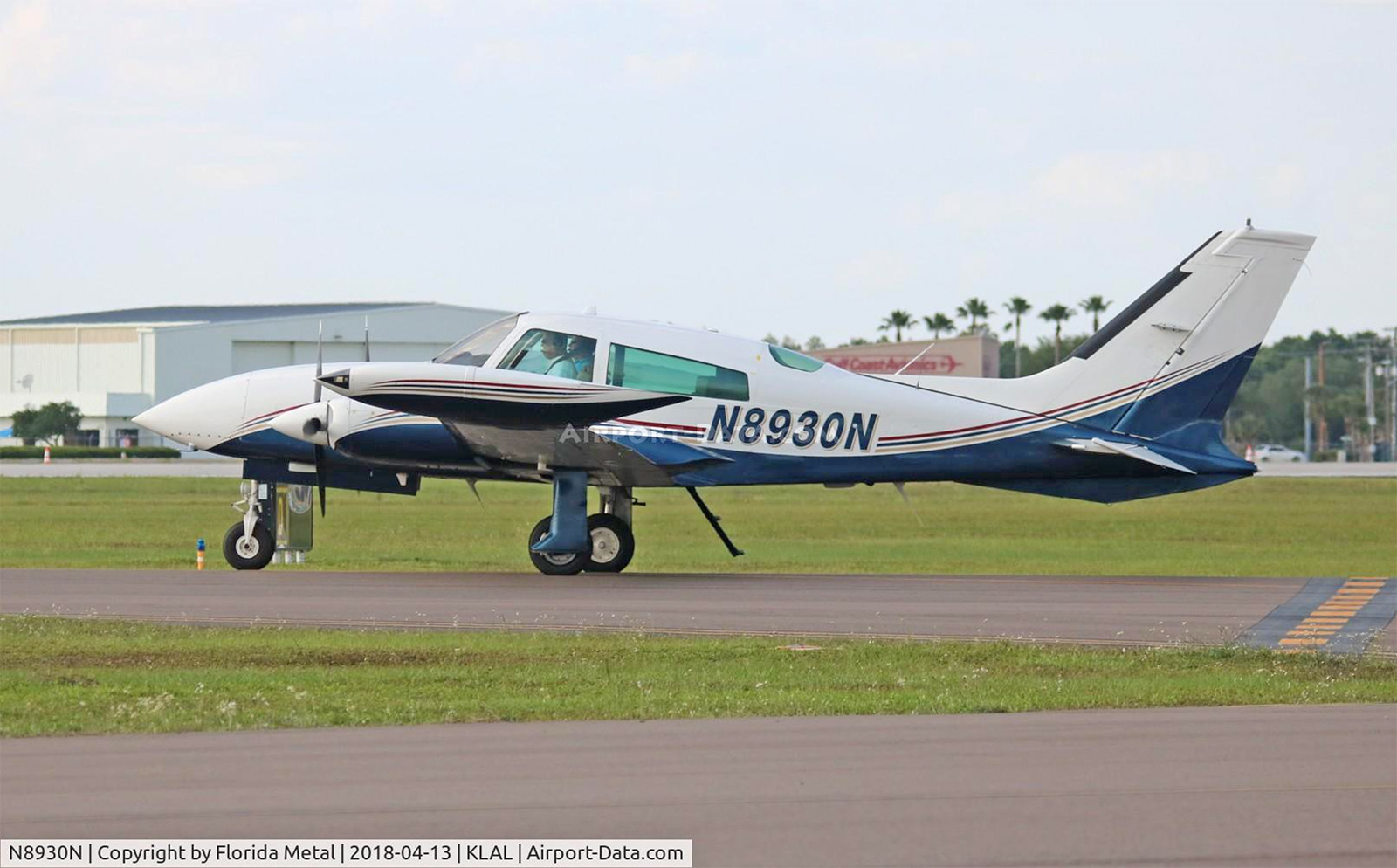N8930N Aviation Accident 2025-04-11

Accident Summary
Fatal Accident (3) - ReProp LLC 310 Series' Cessna 310R, N8930N, Boca Raton, FL, April 11, 2025
Interactive Map
Accident Information
| Approx. Accident Location | Aircraft Fatalities | Ground Fatalities | Injured | ASN Entry |
|---|---|---|---|---|
| 26°22'3.42"N, 80° 7'14.93"W | 3 | 0 | 0 | Aviation Safety Network |
Aircraft Information
| Type | Operator | Registration | Serial Number | Manufacture Date |
|---|---|---|---|---|
| Cessna 310R | ReProp LLC 310 Series | N8930N | 310R0986 | 1977 |
Gallery
YouTube Video(s)
Other Video(s)
ASX Accident Report
On April 11, 2025, at approximately 10:23 AM local time, a 1977 Cessna 310R registered as N8930N and operated by ReProp LLC was involved in a fatal accident near Boca Raton, Florida. The aircraft had departed Boca Raton Public Airport (KBCT) and was en route to Tallahassee International Airport (KTLH) with three individuals on board. The occupants, all members of the Stark family, were identified as 81-year-old Robert Stark, 54-year-old Stephen Stark, and 17-year-old Brooke Stark. All three occupants sustained fatal injuries. One individual on the ground, Pablo Tafur, was injured but survived with non-life-threatening injuries when his vehicle was impacted as a result of the post-crash fire and subsequent debris.
The accident occurred shortly after takeoff from Runway 05 at KBCT. ADS-B flight tracking data and eyewitness reports indicate that the aircraft exhibited erratic behavior in flight, including a continuous series of left-hand turns and difficulty in maintaining altitude, with the aircraft failing to climb above approximately 600 feet above ground level. Multiple witnesses reported seeing the aircraft flying low and unsteady, and some described a circling motion before the aircraft appeared to return toward the airport, likely in an attempted emergency return-to-field maneuver.
The Cessna 310R impacted terrain near the intersection of Military Trail and Glades Road, with significant portions of wreckage strewn across the roadway and adjacent railroad tracks. The impact resulted in a post-crash fire, which consumed most of the aircraft. Video and photographic evidence showed both engines operating at the time of the crash and the landing gear in the down position. This aligns with the possibility that the pilot was preparing for a forced landing. Recorded ATC and witness reports indicated the pilot had declared or relayed a mechanical issue—specifically rudder difficulties—prior to the crash.
Preliminary analysis from accident observers and aviation analysts indicates that a rudder hard-over condition likely occurred, which would have severely limited the aircraft’s controllability. The Cessna 310R features a large rudder designed to counteract asymmetric thrust, and a hard-over condition would require substantial compensatory aileron and asymmetric engine power management to avoid an uncontrollable yaw and roll. This scenario is consistent with the observed left-turning flight path, side-slip flight profile, and inability to maintain stable airspeed and altitude. The aircraft’s airspeed was recorded fluctuating between 96 and 148 knots ground speed, further highlighting the instability.
The NTSB began their on-scene investigation the same afternoon, focusing on three investigative areas: the aircraft, the pilot, and the environment. The investigative team collected flight tracking data, maintenance records, weather data, pilot credentials, and electronic media. The METAR at the time of the accident reported clear conditions with visibility of 10 statute miles and wind from 350° at 5 knots, indicating that environmental factors were unlikely to have been a significant contributor. The aircraft was manufactured in 1977 and had a history of ownership under Robert Stark, an experienced aerobatic pilot and multi-engine, instrument-rated private pilot.
Although definitive causal findings await the NTSB’s final report, all current evidence supports the conclusion that a mechanical failure involving the rudder system led to a progressive loss of control shortly after departure. Despite the apparent efforts by the pilot(s) to manage the situation through asymmetric thrust and emergency maneuvering, the aircraft was unable to maintain a safe flight envelope and ultimately impacted a populated area. The severity of the mechanical issue, combined with low altitude and urban terrain, limited recovery options, leading to the fatal outcome for all on board.
Tracking and Social Media
- Flight Tracking: Flightradar24, FlightAware, ADS-B Exchange
- Social Media: Facebook, Instagram, X (formerly Twitter)
Sources and References
